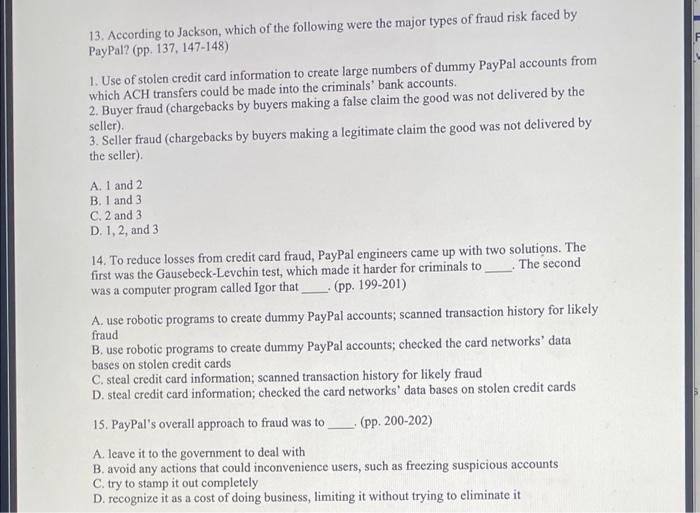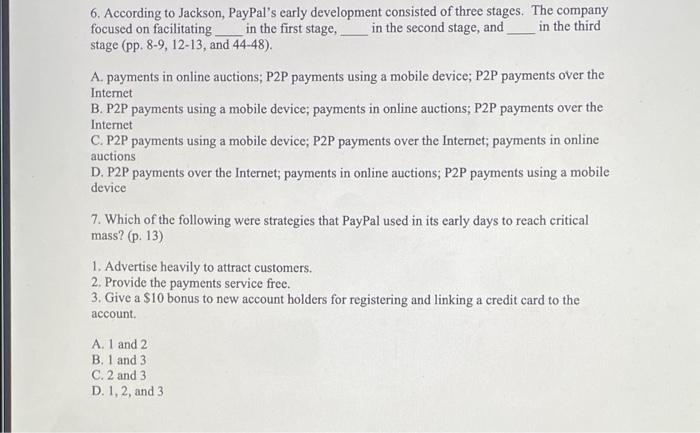13. According to Jackson, which of the following were the major types of fraud risk faced by PayPal? (pp. 137, 147-148) 1. Use of stolen credit card information to create large numbers of dummy PayPal accounts from which ACH transfers could be made into the criminals' bank accounts. 2. Buyer fraud (chargebacks by buyers making a false claim the good was not delivered by the seller) 3. Seller fraud (chargebacks by buyers making a legitimate claim the good was not delivered by the seller) A. 1 and 2 B. 1 and 3 C. 2 and 3 D. 1, 2, and 3 14. To reduce losses from credit card fraud, PayPal engineers came up with two solutions. The first was the Gausebeck-Levchin test, which made it harder for criminals to The second was a computer program called Igor that (pp. 199-201) A use robotic programs to create dummy PayPal accounts; scanned transaction history for likely fraud B. use robotic programs to create dummy PayPal accounts; checked the card networks' data bases on stolen credit cards C. steal credit card information; scanned transaction history for likely fraud D. steal credit card information; checked the card networks' data bases on stolen credit cards 15. PayPal's overall approach to fraud was to (pp. 200-202) A. leave it to the government to deal with B. avoid any actions that could inconvenience users, such as freezing suspicious accounts C. try to stamp it out completely D. recognize it as a cost of doing business, limiting it without trying to eliminate it 6. According to Jackson, PayPal's early development consisted of three stages. The company focused on facilitating in the first stage in the second stage, and in the third stage (pp. 8-9, 12-13, and 44-48). A. payments in online auctions; P2P payments using a mobile device; P2P payments over the Internet B. P2P payments using a mobile device, payments in online auctions; P2P payments over the Internet C. P2P payments using a mobile device; P2P payments over the Internet, payments in online auctions D. P2P payments over the Internet; payments in online auctions; P2P payments using a mobile device 7. Which of the following were strategies that PayPal used in its early days to reach critical mass? (p. 13) 1. Advertise heavily to attract customers. 2. Provide the payments service free. 3. Give a $10 bonus to new account holders for registering and linking a credit card to the account A. 1 and 2 B. 1 and 3 C. 2 and 3 D. 1.2, and 3








